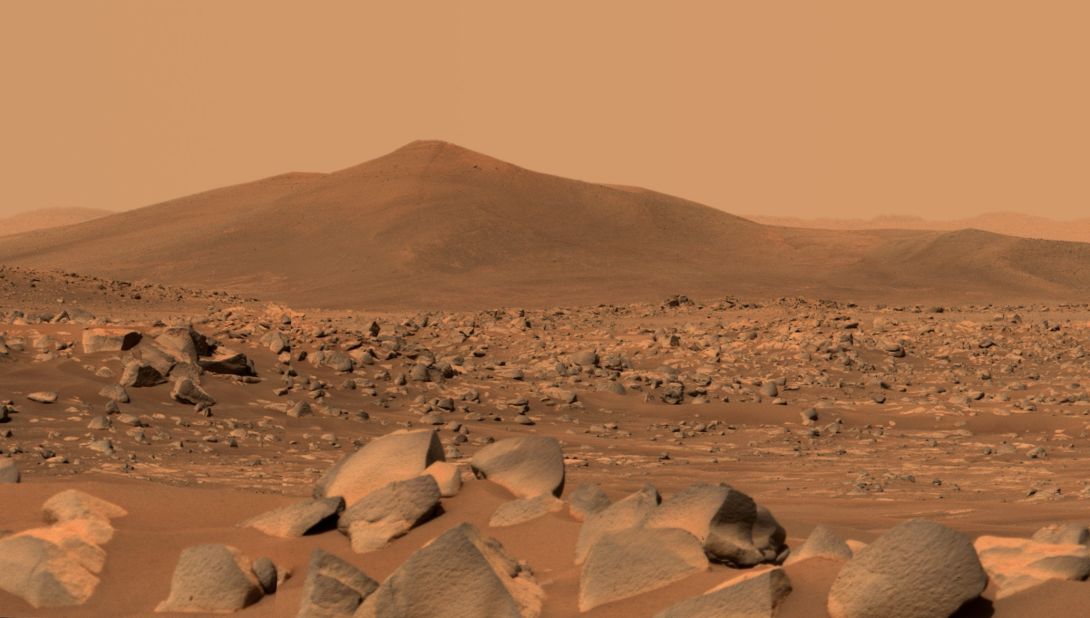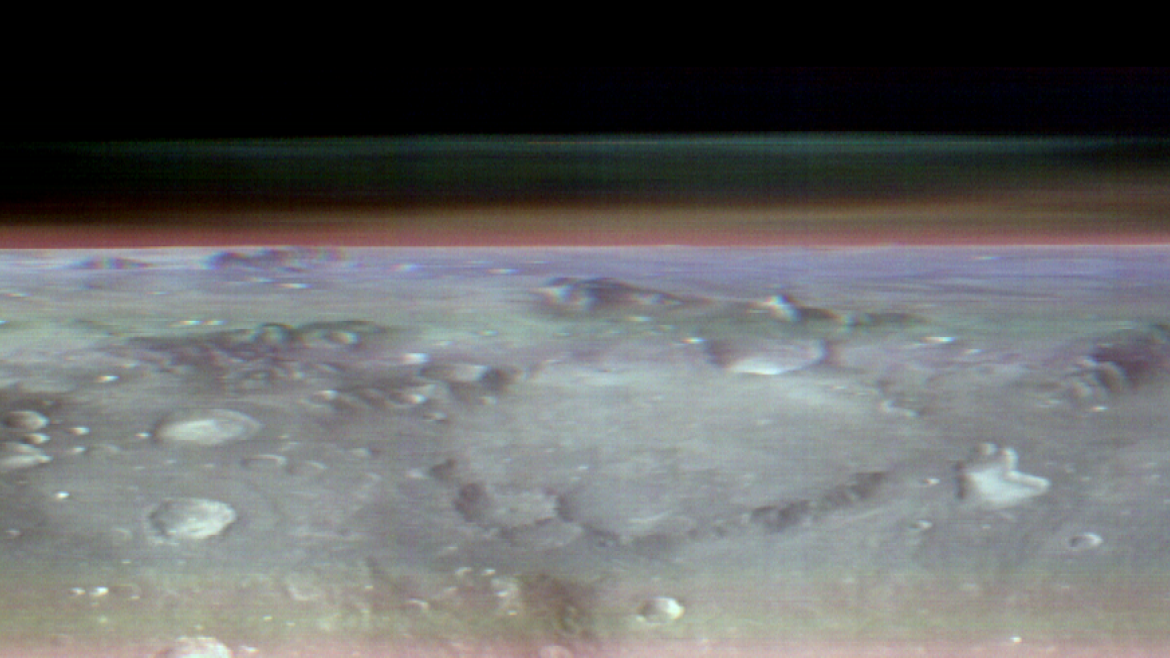NASA Orbiter Captures Breathtaking Views Of The Mars Horizon
NASA Orbiter captures breathtaking views of the Mars horizon giving scientists studying Mars breathtaking experiences similar to astronauts viewing the curvature of Earth from the International Space Station. NASA's 2001 Mars Odyssey orbiter, having successfully completed its 22nd year of exploration on the Red Planet last month, continues to provide a unique perspective for researchers studying Mars.
Author:Camilo WoodReviewer:Dexter CookeNov 30, 20232K Shares139K Views

NASA Orbiter captures breathtaking views of the Mars horizongiving scientists studying Mars breathtaking experiences similar to astronauts viewing the curvature of Earth from the International Space Station. NASA's 2001 Mars Odyssey orbiter, having successfully completed its 22nd year of exploration on the Red Planet last month, continues to provide a unique perspective for researchers studying Mars.
The spacecraft recently recorded a sequence of panoramic images, revealing the undulating Martian terrain beneath veils of clouds and dust. When combined seamlessly, the 10 images present a breathtaking and novel perspective of Mars.
Beyond its aesthetic appeal, this imagery holds significant scientific value, aiding researchers in acquiring fresh insights into the intricacies of the Martian atmosphere. These captivating snapshots were taken in May, capturing the Martian landscape from an altitude of approximately 250 miles (400 kilometers), mirroring the orbit height of the International Space Station above Earth.
"If there were astronauts in orbit over Mars, this is the perspective they would have," said Jonathon Hill of Arizona State University, operations lead for Odyssey's camera, called the Thermal Emission Imaging System, or THEMIS. "No Mars spacecraft has ever had this kind of view before."
How It Was Done
The uniqueness of this perspective stems from the intricate planning required to create it. Engineers at NASA's Jet Propulsion Laboratory in Southern California, responsible for overseeing the mission, collaborated with Lockheed Martin Space, the entity that constructed Odyssey and shares in its day-to-day operations. This collaboration involved three months of meticulous planning for the THEMIS observations.
The infrared camera's remarkable sensitivity to warmth empowers it to map various elements on Mars' surface, including ice, rock, sand, and dust, while also tracking temperature fluctuations. Although the camera can measure water ice or dust in the atmosphere, it is constrained to a narrow column directly beneath the spacecraft due to THEMIS being fixed in place on the orbiter, typically pointing straight down.
Desiring a more comprehensive view of the atmosphere, the mission aimed to observe the layers of water-ice clouds and dust in relation to each other. This expanded perspective, whether capturing a single layer or multiple layers stacked, aids scientists in refining models of Mars' complex atmosphere.
“„I think of it as viewing a cross-section, a slice through the atmosphere. There's a lot of detail you can't see from above, which is how THEMIS normally makes these measurements.- Jeffrey Plaut, Odyssey's project scientist at JPL
Due to THEMIS's fixed orientation, repositioning the camera necessitates adjusting the entire spacecraft. In this instance, the team undertook a nearly 90-degree rotation of the orbiter. This maneuver required careful consideration to ensure that the sun continued to illuminate the spacecraft's solar panels while avoiding exposure to sensitive equipment susceptible to overheating.
The most feasible orientation involved pointing the orbiter's antenna away from Earth, temporarily interrupting communication with Odyssey for several hours until the operation concluded. Looking ahead, the Odyssey mission aspires to replicate such image captures in the future, aiming to document the Martian atmosphere across various seasons.
Over The Moon
To maximize their endeavors, the mission seized the opportunity to capture imagery of Mars' diminutive moon, Phobos. Remarkably, this event signifies the seventh occasion in the orbiter's 22-year mission lifespan where THEMIS was directed towards the moon for the purpose of gauging temperature fluctuations across its surface.
“„We got a different angle and lighting conditions of Phobos than we're used to. That makes it a unique part of our Phobos dataset.- Jonathon Hill
The recently obtained imagery offers valuable insights into the composition and physical characteristics of Phobos, Mars' smaller moon. This data holds the potential to contribute to the resolution of a longstanding debate: whether Phobos, with its dimensions of about 16 miles (25 kilometers) across, is a captured asteroid or an ancient fragment ejected from Mars' surface due to an impact.
NASA is actively engaged in collaboration with JAXA (Japan Aerospace Exploration Agency) in a joint sample return mission named Mars Moon eXplorer (MMX), focused on Phobos and its sibling moon, Deimos. The imagery of Phobos captured by Odyssey proves beneficial for scientists involved in both the Odyssey mission and the MMX project.
Jump to

Camilo Wood
Author
Camilo Wood has over two decades of experience as a writer and journalist, specializing in finance and economics. With a degree in Economics and a background in financial research and analysis, Camilo brings a wealth of knowledge and expertise to his writing.
Throughout his career, Camilo has contributed to numerous publications, covering a wide range of topics such as global economic trends, investment strategies, and market analysis. His articles are recognized for their insightful analysis and clear explanations, making complex financial concepts accessible to readers.
Camilo's experience includes working in roles related to financial reporting, analysis, and commentary, allowing him to provide readers with accurate and trustworthy information. His dedication to journalistic integrity and commitment to delivering high-quality content make him a trusted voice in the fields of finance and journalism.

Dexter Cooke
Reviewer
Dexter Cooke is an economist, marketing strategist, and orthopedic surgeon with over 20 years of experience crafting compelling narratives that resonate worldwide.
He holds a Journalism degree from Columbia University, an Economics background from Yale University, and a medical degree with a postdoctoral fellowship in orthopedic medicine from the Medical University of South Carolina.
Dexter’s insights into media, economics, and marketing shine through his prolific contributions to respected publications and advisory roles for influential organizations.
As an orthopedic surgeon specializing in minimally invasive knee replacement surgery and laparoscopic procedures, Dexter prioritizes patient care above all.
Outside his professional pursuits, Dexter enjoys collecting vintage watches, studying ancient civilizations, learning about astronomy, and participating in charity runs.
Latest Articles
Popular Articles
